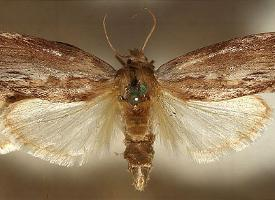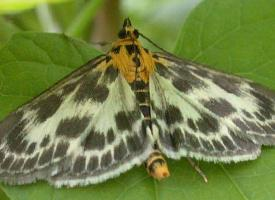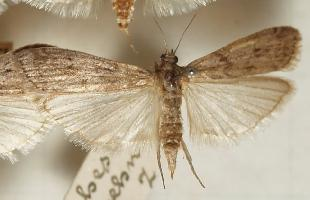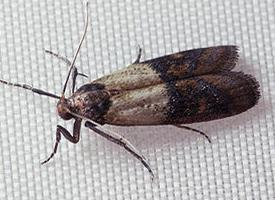
Greutăți și măsuri
| Lungime | de la 8 la 16 mm |
|---|
Descrierea animalului
The Greater wax moth, scientifically known as Galleria mellonella, is a fascinating species of moth that belongs to the Pyralidae family. This moth is renowned for its unique lifecycle and interaction with beehives, making it an intriguing subject of study in both entomology and apiculture. The moth has a cosmopolitan distribution, thriving in regions where honeybees are kept, as its lifecycle is closely intertwined with that of the honeybee.Adult Greater wax moths are relatively modest in appearance, with a wingspan ranging from 30 to 41 millimeters. Their forewings are typically grey or brown with a faint pattern, allowing them to blend seamlessly into their surroundings. The hindwings are paler and more uniform in color, aiding in their camouflage against predators. Despite their unassuming appearance, it is the larval stage of the Greater wax moth that plays a pivotal role in their interaction with bees.
The life cycle of the Greater wax moth is uniquely adapted to exploit the resources found within beehives. Female moths infiltrate beehives under the cover of darkness to lay their eggs, often in crevices or on the edges of frames where beeswax, honey, and pollen are stored. Once the eggs hatch, the larvae begin their destructive feast. They consume beeswax, honey, pollen, and even bee larvae, weaving silken tunnels through the comb as they feed and grow. This behavior can cause significant damage to the hive structure and resources, sometimes leading to the collapse of bee colonies, particularly in weaker or already stressed hives.
The larvae of the Greater wax moth are remarkably resilient. They possess enzymes that allow them to digest beeswax, a substance that is indigestible to most other organisms. This adaptation gives them a unique ecological niche and makes them one of the few species that can directly utilize beeswax as a food source.
After completing their larval stage, which can last several weeks depending on environmental conditions, the larvae pupate within the hive or in nearby protected locations. The pupal stage lasts approximately two weeks, after which the adult moths emerge. The adults are primarily nocturnal and are not known to feed; their primary purpose is reproduction, continuing the cycle of interaction with beehives.
The Greater wax moth, while often considered a pest by beekeepers due to the potential damage they can inflict on hives, plays a significant role in the ecosystem. They act as natural competitors within the hive, challenging the bees' resilience and hygiene practices. In some cases, they can also aid in the decomposition of abandoned or weak hives, recycling nutrients back into the ecosystem.
Despite their negative reputation among beekeepers, the Greater wax moth and its larvae are also used in scientific research and education. Their larvae serve as model organisms in various fields of biology, including immunology, toxicology, and developmental biology, due to their large size, ease of rearing, and susceptibility to manipulation in laboratory settings.
In summary, the Greater wax moth is a complex and fascinating creature with a lifecycle deeply intertwined with that of honeybees. While they can pose challenges to beekeeping, they also play important roles in natural ecosystems and scientific research, showcasing the intricate connections between species and their environments.
Animale similare
Fotografii noi cu animale
Top 10 animale
- Dolphin gull (Leucophaeus scoresbii)
- Diana monkey (Cercopithecus diana)
- Galápagos tortoise (Geochelone nigra complex)
- Moustached guenon (Cercopithecus cephus)
- Japanese spider crab (Macrocheira kaempferi)
- Colossal squid (Mesonychoteuthis hamiltoni)
- Stone loach (Barbatula barbatula)
- Fox tapeworm (Echinococcus multilocularis)
- Japanese macaque (Macaca fuscata)
- Barbary macaque (Macaca sylvanus)


